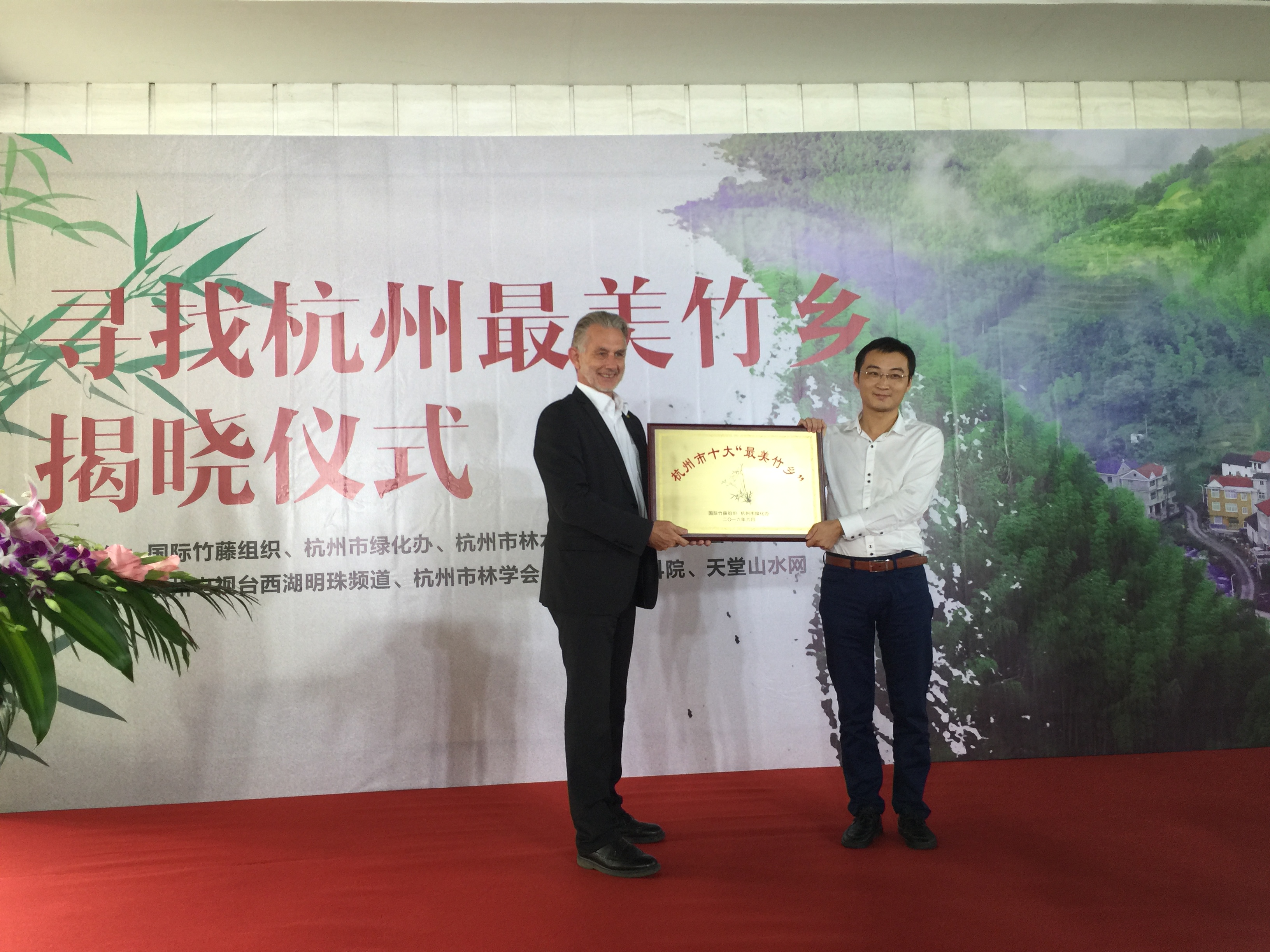I was in Hangzhou, the capital of Zhejiang Province recently. Hangzhou District covers not only the central city but also a number of districts and many villages. I was told by our friends in the Hangzhou Forest Academy that this is the area with most of the Moso bamboo in China – 164,000 hectares!
My main reason for my visit was to help award certificates to the ten “Most Beautiful Bamboo Villages” in Hangzhou. The competition had been organised by the Hangzhou Forest and Water Affairs Bureau, Hangzhou Culture, Radio and Television Group and Hangzhou Daily Group, in partnership with the International Network for Bamboo and Rattan -INBAR. The ceremony took place in the offices of the local TV station, and I was asked to say a few words on behalf of INBAR.

It was touching to hear the emotional thank you speeches from some of the winners, and I was very happy to learn that the awards were not just decided by a panel of judges. The local people in Hangzhou had the opportunity to vote through social media, and they have been active supporters. Therefore, the lucky winners were recognized by their own peers, and this made it even more meaningful.
One of the villages that received an award was Shi Lin, which is the smallest town in China, with only some 5000 participants. The town has large bamboo resources, and we visited one of the plantations to see the big Moso culms. The village leader told us that nearly half the population depends on bamboo for its livelihood, while eco-tourism is another main form of economic development.

Interestingly, there were a number of bent bamboo culms in the Moso plantation that we visited and when I enquired how this happened, I was told that this was a result of heavy snow fall last winter. It is difficult to imagine snow when the temperature is around 35o Celcius, but the 2015/2016 winter has been severe in this part of China. Judging from the number of damaged bamboo culms, the weight of the snow must have been considerable.

The added excitement of my trip to Shi Lin was a visit to the local Stone Forest. Many years ago, I visited Shilin Stone Forest in Yunnan, and I was part of the committee that worked on the World Heritage nomination for this natural monument in southern China. I recall the discussions about the fact that this formation was rather unique, and I supported the registration of the Yunnan Stone Forest as a natural World Heritage Area. With reason:

Therefore, I was intrigued to learn that there is a stone forest in Hangzhou, and I was very grateful for the opportunity to visit the site, which is called the Qiandao Lake Stone Forest. It is a most interesting geological and morphological phenomena, although much smaller than its namesake in Yunnan. There appears to be a relatively small limestone lens between other rocks, and the surface outcrop of this limestone bed has weathered into deep karst fissures. It is still relatively unknown to the public, and we were almost the only visitors.

The limestone is eroded down to ten metres in some cases, creating narrow, deep trenches, and solution patters are obvious throughout. There rocks are badly weathered, and form all kinds of shapes, with the usual innovative names. There is a path that enables you to walk around, and this is tastefully constructed, without damage to any of the rocks, and without obvious concrete or other construction features.

There is a cave in the area, which is a classic vadose stream passage of some ten, twelve metres high. You can traverse from the lower entrance where a stream emerges to the upper entrance, and a steep staircase allows you to climb out. I saw a good number of bats roosting on the ceiling, and there are a few Buddha statues in the lower entrance. I wonder if there are more such cave passages further along the cliff wall.

Shilin village does not only qualify for one of the “Most Beautiful Bamboo Villages”, but it would also be a candidate for a beautiful karst village.

0 comments
Write a comment